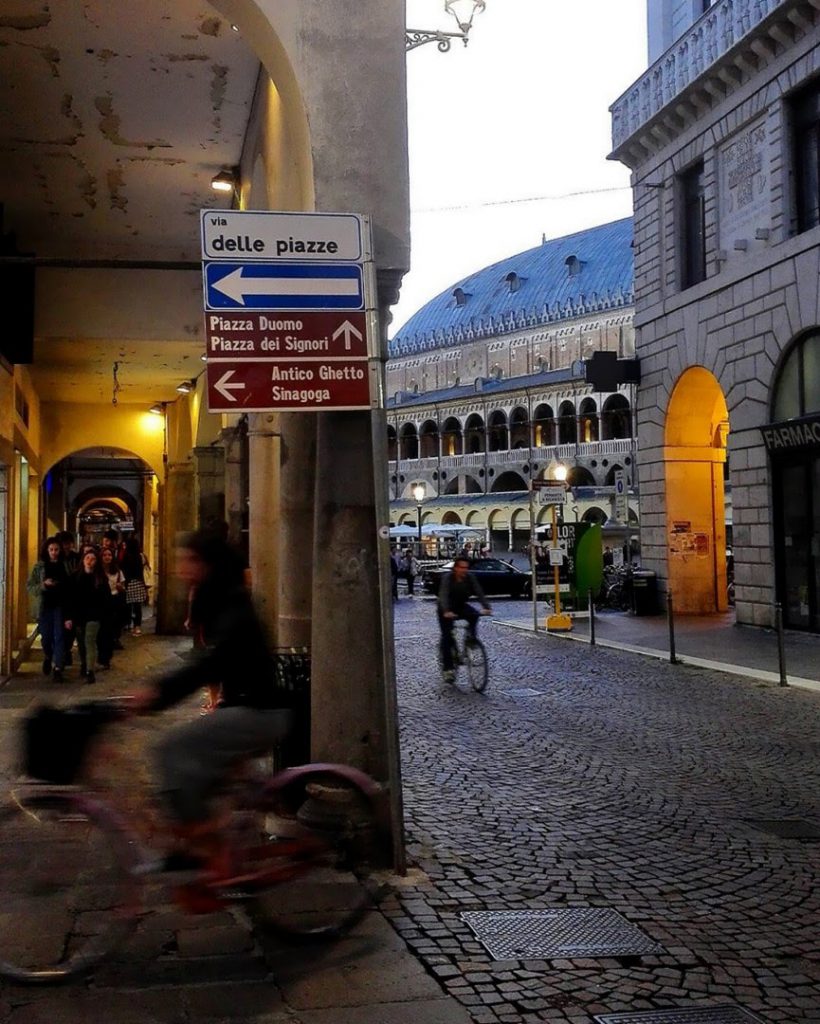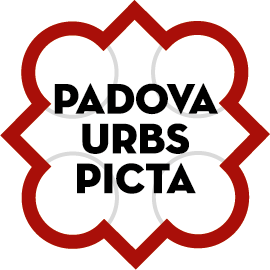The Padua Ghetto is bound to the north by Piazza della Erbe and Via Manin, to the west by Piazza del Duomo and Via San Gregorio Barbarigo, to the south by Via Marsala and to the east by Via Roma.
This visit begins at the corner of Via Roma and Via San Martino e Solferino. It was here that stood the Santa Guiliana Gate (1603), one of the four such gateways that gave access to the Ghetto; alongside you can still see two stone plaques with inscriptions in Latin and Hebrew that reminded the inhabitants of the ghetto of the obligation to return within its walls by sunset.

Continuing along Via San Martino e Solferino, at number 13 you find the only synagogue (1548) which is still used as a place of worship (according to the Italian rite). On the facade, a plaque commemorates the six million European Jews murdered in the Shoah, 8,000 of whom were Italians – of them 46 came from Padua.
Turning into Via delle Piazza, you come to the German-rite synagogue. This seems to have opened as a place of worship in 1525, but the structure underwent various modifications over time and was the object of extension and rebuilding work in the early nineteenth century. The present-day facade is a reminder of the original structures (it was restored in 1998). At the corner of this street with Via San Michele e Solferino one can still see the columns of the two two-light windows of the Spanish-rite Synagogue, which was a place of worship from 1617 to 1892.
Continuing on to number 20, you come to Corte Languazza, within which were the various facilities that served the community: a baker’s, a ritual bathhouse and a kosher butcher’s. On the south side of this small square is a narrow building that extends upwards over a number of floors. These characteristic tall buildings are to be seen in other streets of the Ghetto (their design due to the lack of ground space). On the south side of the square is the restored facade of the German-rite synagogue. From here, take Via dell’Arco, one of the most picturesque in this neighbourhood; when the Ghetto was closed off in 1603, this had to provide accommodation for a number of households.
Turning back to Via San Martino e Solferino, one comes to a building with a tall, well-spaced portico. This is Palazzo Palla Strozzi, named after a Florentine exile who was joined in Padua by such great artists as Filippo Lippi, Niccolò Baroncelli, Donatello and Paolo Uccello.
This neighbourhood also contained a number of shops that were legendary in their own right, but have now disappeared. For example, at number 6 Via Squarcione there used to be a well-supplied shop dealing in rope and cord. And in Via Soncin there were stables for the horses of merchants who had ridden to Padua, as well as strazzerie [rag merchants] whose main clients were students and teachers looking to buy (or hire) used clothing, furniture and utensils. Up until the 1960s Via dei Fabbri still had a kosher butcher’s shop.
Visit the synagogue and Padua Jewish Museum: information here.
